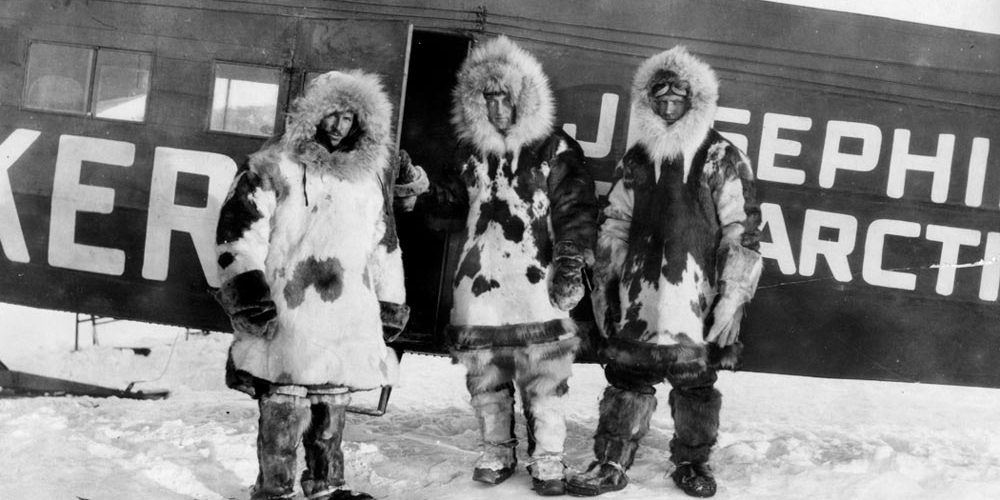Admiral Byrd and the South Pole
Contributor: Barry Fetzer
Sources: History.com
I meant to get this out the other day, highlighting November 29, 1929, just a few days after the 1929 stock market crash that was a contributing factor to the Great Depression and also the 94th anniversary of American explorer and US Navy Admiral Richard Byrd’s epic flight to the South Pole. “He, along with his three companions”, according to History.com, “made the first flight (of a human being—feathered “Byrds”…or birds—don’t count) over the South Pole, flying from their base on the Ross Ice Shelf to the pole and back in 18 hours and 41 minutes.”
But alas, I ended up with a night shift at the Moore County (NC) airport (where I work as a line technician, refueling, taxi-directing, hangaring, and baggage-loading aircraft), and I didn’t finish my shift until 10:00 pm last evening. So, worn out after the shift and past my normal 9:00-ish bedtime, I neglected to finish this vignette yesterday. So here it is today.
Admiral Byrd is an interesting historical figure, an icon of the US Navy, an early aviator qualifying as a naval aviator (#608) in June of 1918, recipient of the US Congressional Medal of Honor, holder of several aviation records and milestones, an Arctic and Antarctic expert, and WWII Pacific war staff officer amongst other accomplishments. His accomplishments make me feel small…which I am.
So, that’s OK.
“Richard Evelyn Byrd learned how to fly in the U.S. Navy and served as a pilot in World War I. An excellent navigator, he was deployed by the navy to Greenland in 1924 to help explore the Arctic region by air. Enamored with the experience of flying over glaciers and sea ice, he decided to attempt the first flight over the North Pole.
“On May 9, 1926, the Josephine Ford left Spitsbergen, Norway, with Byrd as navigator and Floyd Bennet as pilot. Fifteen hours and 30 minutes later, the pair returned and announced they had accomplished their mission. For the achievement, both men were awarded the Medal of Honor. However, some doubt lingered about whether they had actually flown over the North Pole, and in 1996 a diary Byrd had kept on the flight was found that seemed to suggest that the Josephine Ford had turned back 150 miles short of its goal because of an oil leak. In the late 1920s, however, few suspected Byrd had failed in his mission.
“In 1927, Byrd’s prestige grew when he made a harrowing nonstop flight across the Atlantic with three companions. Famous as he was, he had little trouble finding financial backers for an expedition to Antarctica. Byrd’s first Antarctic expedition was the largest and best-equipped expedition that had ever set out for the southern continent. The explorers set out in the fall of 1928, building a large base camp called “Little America” on the Ross Ice Shelf near the Bay of Whales. From there, they conducted flights across the Antarctic continent and discovered much unknown territory.

On and over the South Pole in a Ford Tri-motor in 1929. Photos courtesy of White Eagle Aerospace.
“At 3:29 p.m. on November 28, 1929, Byrd, the pilot Bernt Balchen, and two others took off from Little America in the Floyd Bennett, headed for the South Pole. Magnetic compasses were useless so near the pole, so the explorers were forced to rely on sun compasses and Byrd’s skill as a navigator. At 8:15 p.m., they dropped supplies for a geological party near the Queen Maud Mountains and then continued on. The most challenging phase of the journey came an hour later, when the Floyd Bennett struggled to gain enough altitude to fly safely above the Polar Plateau. They cleared the 11,000-foot pass between Mount Fridtjof Nansen and Mount Fisher by a few hundred yards and then flew on to the South Pole, reaching it at around 1 a.m. on November 29. They flew a few miles beyond the pole and then to the right and the left to compensate for any navigational errors. Byrd dropped a small American flag on the pole, and the explorers headed for home, safely landing at Little America at 10:11 a.m.
“In 1933, Byrd, now a rear admiral in the navy, led a second expedition to Antarctica. During the winter of 1934, he spent five months trapped at a weather station 123 miles from Little America. He was finally rescued in a desperately sick condition in August 1934. In 1939, Byrd took command of the U.S. Antarctic Service at the request of President Franklin D. Roosevelt and led a third expedition to the continent. During World War II, he served on the staff of the chief of naval operations. After the war, he led his fourth expedition to Antarctica, the largest ever attempted to this date, and more than 500,000 miles of the continent were mapped by his planes. In 1955, he led his fifth and final expedition to Antarctica. He died in 1957.”

Byrd (center) and chief aviation pilot Floyd Bennett (right) in front of the Josephine Ford in Spitsbergen, Norway, around the time of their North Pole flight. Photo courtesy of The Ohio State University Archives.







